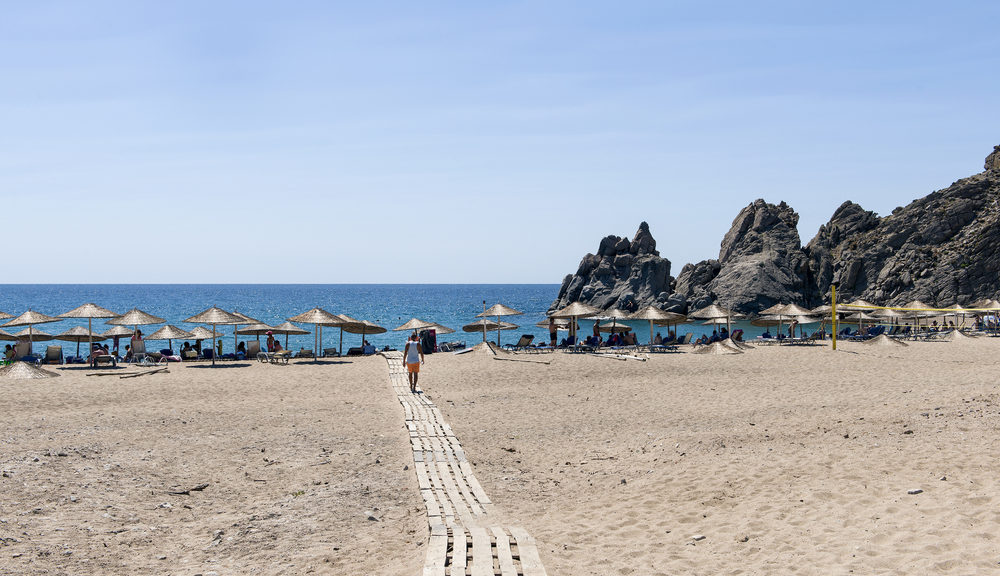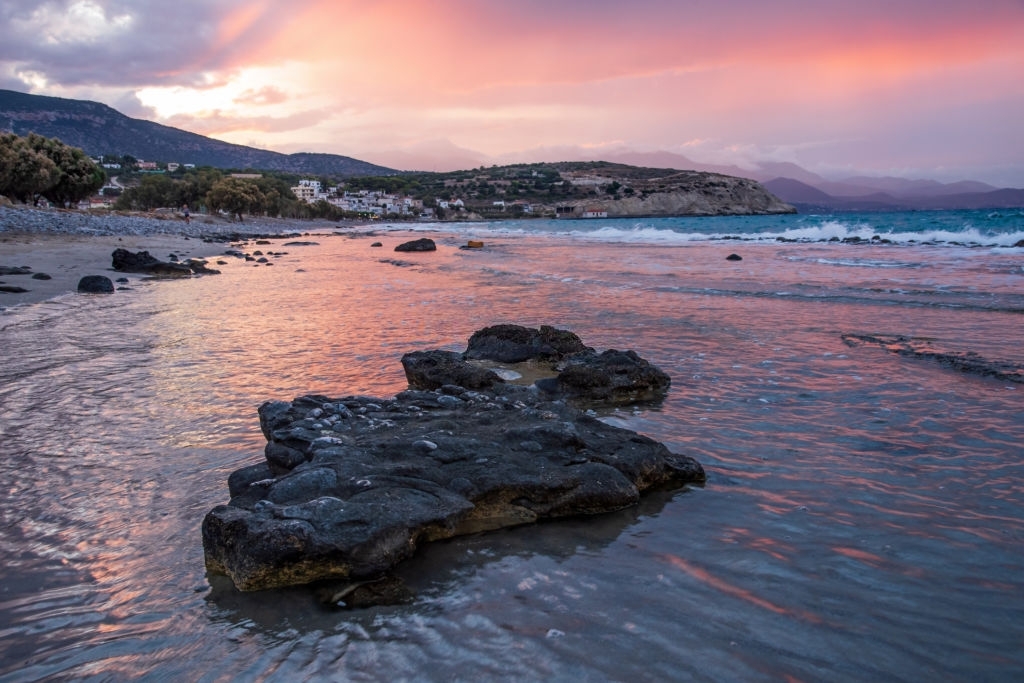
Pachia Ammos Beach
Οn the southern coast of Crete island, in the prefecture of Heraklion, we find the wonderful beach of Pachia Ammos (in Ornio) which translates to “Deep Sand“. This is a stunning, wide beach of more than 300 m long, with soft sandy, as the name suggests, and clear, deep waters. It is set in along tall cliffs and relatively exposed to the winds. Due to its remote location, it is most popular with locals in the area, or visitors looking for something away from the crowds. On the other side of the beach, we meet the beach of Treis Ekklisies named after the small coastal village.

Like many other beaches in the area, it is a popular nesting spot for loggerhead (Caretta Caretta) turtles. The beach forms at the exit of the Agia Paraskevi Gorge. To get to Pachia Ammos, you follow the dirt road that starts at the village of Treis Ekklisies. From Heraklion, the distance is about 60 km and the last 10 km follow a windy but stunning path that descends towards the village. If you are travelling from Heraklion, you can make a quick stop at the village of Choudetsi, for a chance to see the only museum in Greece that focuses on traditional musical instruments from all around the world. A music workshop operates here, and a popular festival takes place in the village each summer.
There are many other popular attractions in the area, especially for nature and beach lovers. It is worth remembering that most of the beaches and the roads on the southern coast of Crete island are long and windy, so always estimate more time than you think you may need. West of the beach, the Asterousia mountain range frames the scene; a much different setting from the other mountains of Crete. These mountains are the kingdom of many predators and vultures. Among them, the endangered vulture Gypaetus Barbatus or “Kokkalas” (for his tendency to throw the bones of animals he has just devoured while in flight), the golden eagle Aquila Chrysaetos, the spotted eagle, the peregrine falcon, and the black peregrine falcon.